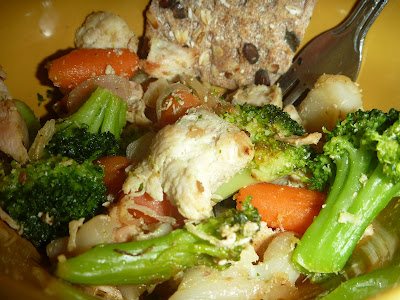Ladies and Gents,
 |
| This is what I call Freedom Eating. |
In 1854 a poetic and philosophical man made a comment which is now buried in the pages of his book. 'To be awake is to be alive,' he said. But every man and woman is too drowsy for daily life and too far asleep to participate fully in the highest tests of their lives. Hats off to us for trying, but we could be so much better.
The man I refer to was Henry David Thoreau. He favoured getting out into the wild in order to reclaim our vitality. I favour this too, but there is something the modern world tends to forget when it comes to being awake and truly alive. That something is proper nutrition.
Nutrition is vital in our lives. It is one of several processes which feed our body. It is the reason we feel deeply for those who are unable to access enough food. It is also the reason we have become aware of the dangers of an economic climate which leads people away from the shelves of healthy food and towards the fast-food stands. Few people are aware of the true list of ingredients and the lack of nutrition prevalent in even the prepared foods which look healthy. Those with digestive symptoms may search for the right foods for their body, but many others with medical conditions might not actually realise the impact that some foods, no matter how good their diet, have on their symptoms.
Let me tell you something. At 17 I was diagnosed with the autoimmune form of hypothyroidism. A year later I asked my specialist how long he thought I had this disease without knowing. Well he shrugged a little and said, '7 years.'
I spent a while considering all the parts of my life which may have had something to do with the disease, all the things people had said about me, and all the things I had overheard. Rarely, if at all, during those 7 years, was I ever really awake or alive. I was processing things at a different speed, and the times I was really alive are still hard to remember, as blurry, distant memories which is just the way I was.
Thyroid disease is serious in that, given time, it can kill you. The symptoms will be more pronounced than any ordinary form of tiredness in the same way that fatigue is greatly exaggerated in similar conditions compared to everyday forms of it. But let me ask those of you without these conditions now, how often do you feel alert and functioning to your highest standard? How often do you not feel bloated? How often do you lack the energy and vitality required to participate fully in a conversation or activity? As good old Thoreau said, none of us are really awake. None of us are really alive. Too many of us are being held back by symptoms and too few of us are aware of the foggiless world that's out there if we just get out in the open and away from the smog and breathe it all in with pain-free food by our sides. Admittedly we are not all the same. We are all humans (last time I checked) but in the modern world we have vastly different lifestyles, are in different environments, and are in different medical states. But there is no doubt that we all have foods which slow us down and make our bodies feel more like machines grinding away and sounding awfully like a train clanking along an uneven track while a dead rat hides in the middle carriage, instead of course of the wonderful image of an organic being full of chemicals flowing delicately in the right order and amount. Yeah right, right?
So, if you frequently feel drained, foggy, slow, more like a half-functioning robot when you don't even have a medical condition to put it down to, then wherever you are right now, put your hand up. Now stand up.
Okay, now everyone with a digestive condition or ongoing symptom, stand up with me. And those who have to eat every three hours? Those with conditions, symptoms, or issues ranging from all autoimmune conditions to other hormonal conditions, to poor focus, to the ones which are so unusual that you feel left out in this list,
stand up.
And anyone with medical conditions for which the advice is contradictory; the treatments useless and littered with side effects? Stand up.
And finally, anyone who wants to eat healthier but doesn't know how; any student who, like me, is trying to eat well to reach their full potential and not be held back, but is facing the issue of expensive bills and too much stuff clogging up a small fridge, stand up.
Okay, now if you feel well, or like your diet and health are good or under control, sit down. Anyone who thinks I'm going on about rubbish, also sit.
Who's left?
Now let me tell you what I'm doing in a nutshell. If you think it will help you, I want you to sit down. And then I want you to like the following photo album.
Click here to take a look
[
http://www.facebook.com/media/set/?set=a.296397733799913.57833.296392280467125&type=1]
If you're still standing now, let me know whether something is missing from the proposed website. If you're sitting and it's not because you gave up on the idea, let me know I've got a job to do with this website.

















































